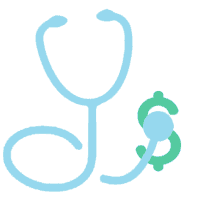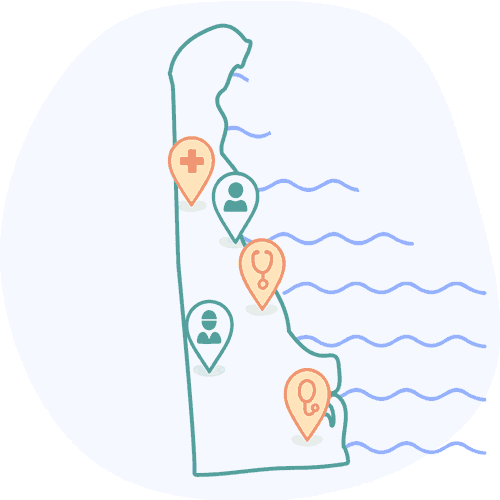CA OMFS: E/M Billing - 2021 Major Changes

Effective March 1, updates to California’s Physician and Non-Physician Practitioner Fee Schedule significantly alter the way providers bill for Evaluation and Management (E/M) services.
Most notably, the updates scrap the Centers for Medicare and Medicaid Services (CMS) 1995 and 1997 E/M Documentation Guidelines as the means of determining the level of E/M service. Instead, providers must choose to apply either Medical Decision Making (MDM) or time as the sole factor in determining the appropriate level of E/M service.
Changes to E/M Billing Codes
Per a February DWC Newsline, the billing codes providers use to reflect E/M services do not change, with two exceptions:
- Current Procedural Terminology (CPT) Code 99201 is no longer applicable.
- Providers use Healthcare Common Procedure Coding System (HCPCS) Code G2212 to bill extended time for E/M services.
Otherwise, the actual billing codes for E/M services remain the same. Providers continue to use CPT codes 99202 through 99205 to bill for E/M services for new patients, and CPT codes 99211 through 99215 for established patients. In determining the level of E/M service, however, providers must adapt to new standards.
Determining the Level of E/M Service
For dates of service prior to March 1, 2021, providers determine the level of E/M service using the CMS 1995 or 1997 Guidelines. This more convoluted system required providers to determine the correct billing code based primarily on the conjunction of two out of three “key” E/M service components, from a total list of seven components.
The seven-component system is no more. For dates of service on or after March 1, providers may determine the E/M service level in one of two ways:
- The level of Medical Decision Making (MDM) or,
- The total time spent on the date of the encounter
In almost all cases, the provider is free to choose between MDM and time as the standard by which to determine the E/M service level. The lone exception applies when billing with CPT code 99211. For CPT 99211, providers must determine the E/M service level by time, not MDM.
How to Determine E/M Service Level via MDM
For encounters prior to March 1, MDM served as one of the “key” components in determining the E/M service level according to 1995 or 1997 CMS Guidelines. For encounters on or after March 1, however, providers may use MDM as the sole standard by which to establish the E/M service level.
Medical Decision Making (MDM) is divided into four types:
- Straightforward MDM
- Low Complexity MDM
- Moderate Complexity MDM
- High Complexity MDM
The type of MDM is determined by a combination of three elements:
- The Number and Complexity of Problems Addressed at Encounter
- The Amount and/or Complexity of Data Reviewed and Analyzed
- The Risk of Complications and/or Morbidity or Mortality
Each element is further divided into four levels. To qualify as a given type of MDM, the E/M service in question must meet or exceed a certain level in two out of the three elements reflected in the table below:
Type of Medical Decision Making (MDM) |
Number and Complexity of Problems Addressed at Encounter |
Amount and/or Complexity of Data Reviewed and Analyzed |
Risk of Complications and/or Morbidity or Mortality |
Straightforward MDM |
Minimal number and complexity |
None or Minimal data amount |
Minimal Risk |
Low Complexity MDM |
Low number and complexity |
Limited data amount |
Low Risk |
Moderate Complexity MDM |
Moderate number and complexity |
Moderate data amount |
Moderate Risk |
High Complexity MDM |
High number and complexity |
Extensive data amount |
High Risk |
For example, an E/M service encounter comprised of:
- A minimal number and complexity of problems addressed, and
- No data reviewed and analyzed, and
- A moderate risk of complications...
...qualifies as “Straightforward” MDM. Note that even though the risk of complications is “Moderate,” the level of a single element cannot by itself qualify the encounter as “Moderate” MDM. Since two out of three elements fall into the “Straightforward” category, the type of MDM is “Straightforward.”
Once the provider determines the correct MDM type, it’s simply a matter of applying the appropriate billing code, as shown in the table below:
Type of Medical Decision Making (MDM) |
Billing Code (New Patient) |
Billing Code (Established Patient) |
Straightforward |
99202 |
99212 |
Low |
99203 |
99213 |
Moderate |
99204 |
99214 |
High |
99205 |
99215 |
How to Determine E/M Service Level via Time
Like MDM, time is one of the seven E/M service components outlined in the CMS 1995 and 1997 Guidelines, currently applicable only to dates of service prior to March 1. Under that system, time was not a “key” component in determining the level of service, unless the provider spent more than 50% of the encounter time on coordination and care.
Now, time’s time has come.
For dates of service on or after March 1, providers may use time as the sole factor in determining the E/M service level. The appropriate billing code is determined by the time the provider spent delivering E/M services on the date of the encounter, measured in 15-minute increments. Billing codes for each time frame are displayed in the table below:
Patient Type |
Time Spent (in minutes) |
E/M Code |
New |
15-29 |
CPT 99202 |
New |
30-44 |
CPT 99203 |
New |
45-59 |
CPT 99204 |
New |
60-74 |
CPT 99205 |
Established |
<10 |
CPT 99211 |
Established |
10-19 |
CPT 99212 |
Established |
20-29 |
CPT 99213 |
Established |
30-39 |
CPT 99214 |
Established |
40-54 |
CPT 99215 |
Providers may count both face-to-face and non-face-to-face E/M services towards the total billable time of the encounter. Those services include:
- Preparing to see the patient (e.g., review of tests)
- Obtaining and/or reviewing separately obtained history
- Performing a medically appropriate examination and/or evaluation
- Counseling and educating the patient/family/caregiver
- Ordering medications, tests, or procedures
- Referring and communicating with other health care professionals (when not separately reported)
- Documenting clinical information in the electronic or other health record
- Independently interpreting results (not separately reported) and communicating results
- Patient/family/caregiver care coordination not separately reported
When the total time for E/M services in a single encounter exceeds the highest limit represented by the E/M billing codes (74 minutes for new patients, 54 minutes for established patients), providers may use the CMS extended time billing code HCPCS G2212. Per § 9789.12.11 (c) (2), providers may bill one unit of G2212 for each additional 15 minutes of E/M services delivered by the physician or other qualified healthcare professional.
Providers may not bill HCPCS G2212:
- For any time unit less than 15 minutes
- For the same Date of Service in which the provider bills CPT codes 99354, 99355, 99358, 99359, 99415, or 99416
Compensation complications can leave your practice stressed out and underpaid. DaisyBill offers a complete solution for workers’ comp authorization, billing, and appeals. Request a demo below, and see what Daisy can do for you.
REQUEST DEMO
DaisyBill provides content as an insightful service to its readers and clients. It does not offer legal advice and cannot guarantee the accuracy or suitability of its content for a particular purpose.


.gif)
